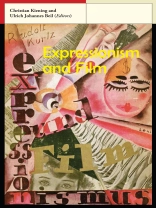Expressionism and Film, originally published in German in 1926, is not only a classic of film history, but also an important work from the early phase of modern media history. Written with analytical brilliance and historical vision by a well-known contemporary of the expressionist movement, it captures Expressionism at the time of its impending conclusion—as an intersection of world view, resoluteness of form, and medial transition. Though one of the most frequently-cited works of Weimar culture, Kurtz’s groundbreaking work, which is on a par with Siegfried Kracauer’s From Caligari to Hitler and Lotte Eisner’s The Haunted Screen, has never been published in English. Its relevance and historical contexts are analyzed in a concise afterword by the Swiss scholars Christian Kiening and Ulrich Johannes Beil.
表中的内容
The Meaning of Expressionism
World View
Art
Film and Expressionism
The Expressionist Film
Expressionist Elements in Film
Abstract Art
Style in Expressionist Film
Limitations of the Expressionist Film
Perspectives
Afterword by Christian Kiening and Ulrich Johannes Beil
关于作者
Rudolf Kurtz (1884–1960) was a leading participant in the German Expressionist movement, contributing a multitude of essays, lampoons, reviews, and commentaries. From 1914 until his death he worked in the film industry, writing scripts and directing his own movies.
Christian Kiening is Professor of Germanic Studies at the University of Zurich, Director of the National Competence Centre for Research Mediality, and co-editor of Deutsche Vierteljahrsschrift für Literaturwissenschaft und Geistesgeschichte.
Ulrich Johannes Beil is Privatdozent at the University of Munich and Senior Researcher at the National Competence Centre for Research Mediality at the University of Zurich.
Brenda Benthien is an independent film scholar and critic. Her work has appeared in Variety, Filmecho/Filmwoche, the Berlin Film Festival Journal, and other publications.












